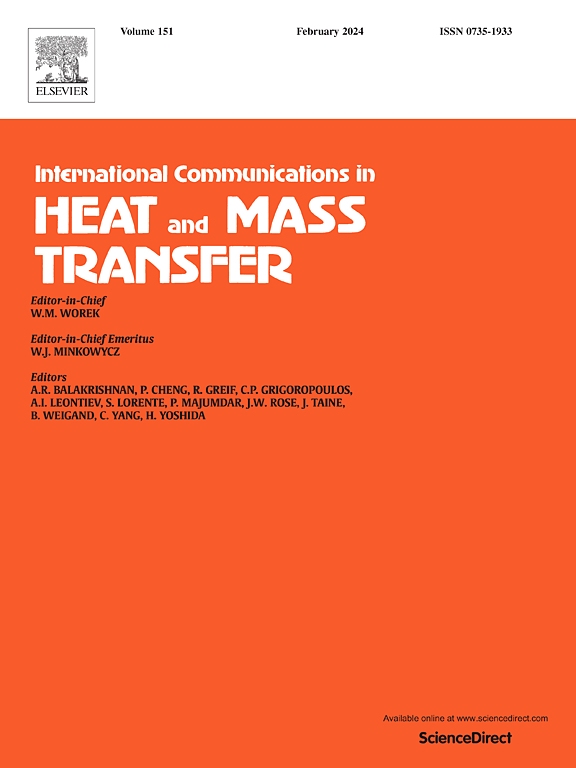Why people shape roofs the same way
IF 6.4
2区 工程技术
Q1 MECHANICS
International Communications in Heat and Mass Transfer
Pub Date : 2025-03-28
DOI:10.1016/j.icheatmasstransfer.2025.108909
引用次数: 0
Abstract
The roofs of houses look similar in profile, especially in villages and old settlements. Why? The question is about the common angle of inclination. The answer comes from heat transfer by natural convection. Inspired by the evolution of the sapiens toward more power from the adoption of artifacts, we show that the existence of common roof shapes can be reasoned from the needs of those who live under the roof. Is there a shape that, while reducing the heat loss to the ambient, reduces the human effort (gathering firewood, etc.)? We consider two classes of roof shapes, Λ and cone, and two roof sizes, small and large (respectively, two flow regimes, laminar and turbulent). In laminar natural convection, the common profile of the Λ and the cone looks shallow, with height/base ratios comparable with 1/4. In turbulent flow, the Λ and the cone look like an equilateral triangle. These findings reinforce the evolutionary record of human civilization toward economy of effort and longer life. They also present an opportunity for the future ‘energy design’ of buildings: the external shape has a significant effect on the heat loss from the building.
为什么人们都以同样的方式塑造屋顶
房屋的屋顶在侧面看起来很相似,特别是在村庄和旧定居点。为什么?问题是关于共倾斜角。答案来自自然对流的热量传递。受智人从采用人工制品中获得更多权力的进化的启发,我们表明,共同屋顶形状的存在可以从居住在屋顶下的人的需求中推断出来。是否有一种形状,在减少热量流失到周围环境的同时,减少了人类的努力(收集柴火等)?我们考虑了两类屋顶形状,Λ和锥形,以及两种屋顶尺寸,小和大(分别是两种流动形式,层流和湍流)。在层流自然对流中,Λ和锥体的共同轮廓看起来很浅,高/底比约为1/4。在湍流中,Λ和锥看起来像一个等边三角形。这些发现强化了人类文明朝着节约精力和延长寿命的方向进化的记录。它们也为未来建筑的“能源设计”提供了机会:外部形状对建筑的热量损失有重大影响。
本文章由计算机程序翻译,如有差异,请以英文原文为准。
求助全文
约1分钟内获得全文
求助全文
来源期刊
CiteScore
11.00
自引率
10.00%
发文量
648
审稿时长
32 days
期刊介绍:
International Communications in Heat and Mass Transfer serves as a world forum for the rapid dissemination of new ideas, new measurement techniques, preliminary findings of ongoing investigations, discussions, and criticisms in the field of heat and mass transfer. Two types of manuscript will be considered for publication: communications (short reports of new work or discussions of work which has already been published) and summaries (abstracts of reports, theses or manuscripts which are too long for publication in full). Together with its companion publication, International Journal of Heat and Mass Transfer, with which it shares the same Board of Editors, this journal is read by research workers and engineers throughout the world.

 求助内容:
求助内容: 应助结果提醒方式:
应助结果提醒方式:


